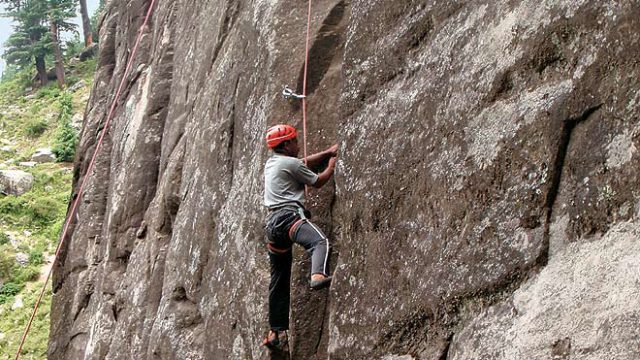I wasn’t quite sure where exactly Lorenzo wanted to go. He was staring down at
“Where exactly are we going?” I asked again.
“You’ll see”, he replied, with a mysterious grin.
I tried to follow his instructions, not really minding the mystery as long as we were outdoors. Soon, he had me pull over by the side of the elevated bridge. On our left, a used-car store and a sex shop. I laughed out loud.
He noticed and said, “No, that’s not it.”
On our right, a slightly grubby field and a small copse around a stream flowing under the bridge. Leaving the car in the parking lot of the sex shop, we vaulted over the metal barrier of the bridge and scrambled down a disused trail, past discarded car tyres and random junk. The field across looked like it once contained a factory, but had now been abandoned for years. The mystery deepened. The trail became increasingly muddy as it twisted to become parallel to the stream, becoming just very slightly pastoral, with weeds and straggly wild flowers growing on its edges. A fly or a bee buzzed past my ear. I felt vaguely worried—semi-urban adventures hadn’t been my thing since I broke into an abandoned clubhouse with friends to smoke a cigarette back in middle school.

“And voila!” Zo looked at me proudly. He stood precariously in his Converse shoes, balancing on leaves at the edge of a muddy bank above a grubby river. Just across, a few metres away, he pointed at a rusting metal pillar, quite overgrown with weeds, brush and sad-looking low trees. “It’s the tri-border. The point between Luxembourg, France and Belgium!”
I was not impressed.
That, in a nutshell, is how the average Western European perceives Luxembourg. It barely registers on their radar. When it does, it’s usually “oh, it’s so boring”. As someone who spent the first part of his childhood in very small and out-of-the-way places, I find that pretty funny, because Luxembourg City is actually a UNESCO World Heritage Site, and it is—abandoned industrial zones aside—gorgeous.
I have a phenomenal view from my apartment of the old walled city rising above the deep Pétrusse and Alzette gorges. An unbroken line of beech, oak, wild cherry and other tall trees march away to my left and right along the Pétrusse valley, and continues as far as my eye can see north and northwest, towards (eventually) Germany. One of my favourite things about living here is the fact that I can walk out of my apartment, head down into either Pétrusse valley or the Grund, and feel transported. Alternating between verdant forest, high rocky cliffs and ruined fortifications, it’s hard to imagine that I’m literally in the middle of a major European capital.
A very short walk across the Old Bridge (Al Bréck in Luxembourgish—yes, it’s a language), and I can walk along the Chemin de la Corniche, what’s sometimes touted as the ‘most beautiful balcony in Europe’, towards the rocky promontory of the Bock, the site of Count Siegfried’s castle in 963 AD.

A hundred metres straight below, the Alzette wanders along between the Neumünster Abbey (‘new’ because it was rebuilt in the 1600s after the old one burnt down), medieval townhouses and apple orchards. Heading down, I walk along the river to the Clausen district, past Amazon’s European headquarters, towards the Pfaffenthal district. Just across and on the other side of the valley, quite stunning from above, are the reconstructed ruins of the Fort Thüngen, into which is incorporated the Mudam—the Museum of Modern Art. It’s quite a stunning feat of architecture, blending the modern with the old. Even after a year, I still discover new paths and trails, ruins and historical sites.

Luxembourg is a small country, 2,500 sq km the shape of a pear, bang on the point where France, Belgium and Germany meet. Once upon a time it was much larger, a four-petalled flower, but it steadily lost territory in the last several hundred years. A little chunk of the Netherlands isn’t too far away—in fact, the Dutch acquired Luxembourg after the latter lost their past grandeur, territory and influence, so much so that the two flags are nearly the same.
The Dutch still like to invade in droves as soon as the sun is out, to go climbing on the sandstone cliffs of Berdorf. Second funny story. A few months ago, the famous 1970s climber Henry Barber contacted me to ask for climbing tips for India. We got chatting, and I told him I lived in Luxembourg. He said, “Luxembourg? But that’s got amazing climbing. Berdorf is magical, it’s one of my favourite places, with little caves and stuff.” So don’t take it from me, take it from a legend.
As with much of Europe, there’s evidence of human occupation since Palaeolithic times in what is today the country of Luxembourg. It was later occupied by Celtic tribes, then by the Romans, which is possibly when Luxembourg (Lucilinburhuc, literally, ‘little fortification’) got its name. Since then, its lush valleys and hills have been dotted with historical sites.

One day, with my aunt visiting from the US, we drove up north to Vianden Castle, a stunningly well-reconstructed European monument. It stands on a rock a hundred metres above the river Our, flowing through the Ardennes. Once a Roman castellum, it went through various periods of construction and subsequent ruin, and even served as a centrepiece during the Battle of Vianden, when four Luxembourgish partisans held off hundreds of Waffen-SS troops in World War II, just before the Battle of the Bulge.
I’m still discovering much of this little country. Even though it’s small, it is a Schengen state— Schengen being a village in Luxembourg where the free-movement treaty was signed—and it’s so easy to wander off for a hike into the Ardennes in any direction.
THE INFORMATION
Getting there
There are no direct flights to Luxembourg from India, but it is well-served by major airlines via their hubs, including Lufthansa, KLM and Swiss. A good option is Turkish Airlines, which flies via Istanbul and is well-priced (approx. ₹45,000 round trip). There are also multiple TGVs daily from Gare de l’Est in Paris, a quick two-hour train ride.
Plan to spend two or three days in the city, but explore the rest of the country by car. There are pretty forest hikes, rivers and streams, castles atop rock formations and so on.
You’re also not far from Trier in Germany and other interesting places to check out.
Where to stay
Unless you’re willing to cough up every day for expensive taxis, stay as downtown as possible when in Luxembourg City. This will give you a chance to get around on foot. Kirchberg and Cloche d’Or are brand new, modern districts, which is not what you’re coming to Luxembourg for, so no point staying there, unless you want easy parking for your rental car.
Try to avoid hotels just opposite the train station (Gare) as the area can feel grungy in the evenings. Prices for good hotels start from around €150 a night. Also try Booking.com and Airbnb for apartment rentals.
Where to eat
The country has several Michelin-starred or listed restaurants, so definitely look up viamichelin.com. As for secret spots and cheap eats, I (only half-jokingly) think that Risso, a low-key pizzeria on Rue d’Anvers, in the city, serves one of the best Napolitano-style pizzas north of Naples. They won’t give you a table without a reservation even if you talk to them in Italian, and no, they will never turn down the TV when a football match is on. But the pizza is excellent.
Other tips
>Taxis in Luxembourg are hellishly expensive, and there is no Uber. Walk or use the bicycle-sharing system, or get adventurous with public transport.
>If you’re game to try the buses, download the Mobiliteit app (mobiliteit.lu) for schedules and route planning. It’s not always possible to buy tickets on the bus, so download the M-ticket app and hook up your PayPal account to it, or remember to buy your ticket beforehand.
>Rent a car at the airport, but remember that city parking isn’t cheap.
alzette river
St Jean du Grund Church
Vianden castle





